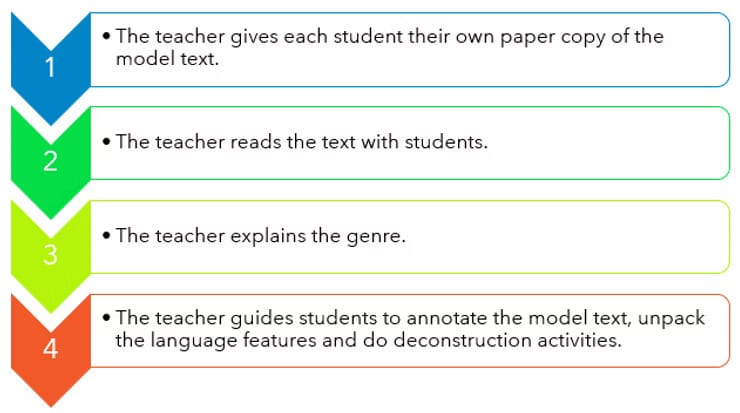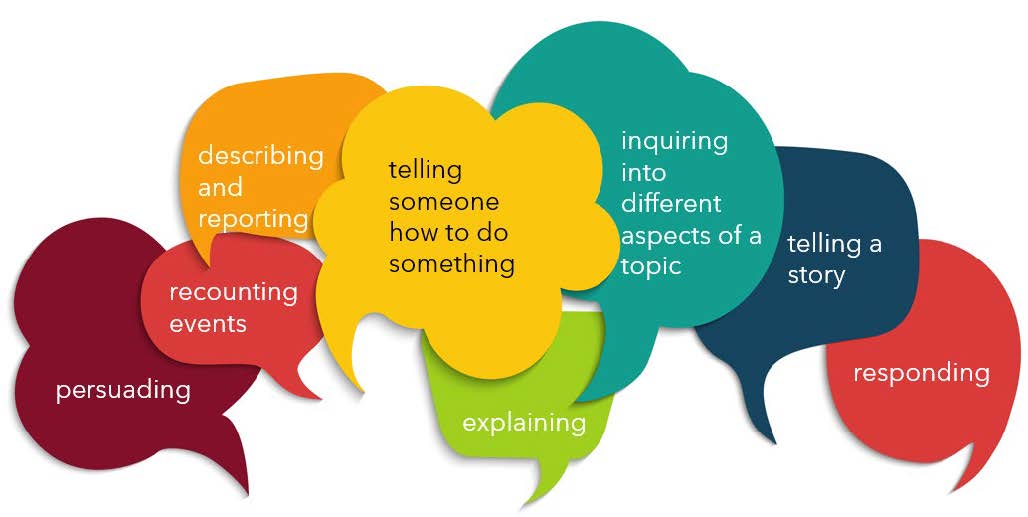Your cart is currently empty!


Why do we need a model text?

What is a model text anyway?
Teachers often wonder about this.
A model text is an example of exactly what the students have to write. It’s an answer, an exemplar, a mentor text that has the exact language features that we want students to write.
Here’s an example from PDHPE in Year 8. It’s a description of a skill for positive and respectful relationships. The model text is a paragraph, which has four phases:
- Identify the skill
- Define
- What happens if the skill is not present?
- Benefits of the skill.

A model text includes the text AND the annotation that students will do, to show they understand what is in the text and how it works (the language features). In the example above, the language features identified are:
- the phases of the paragraph
- underlining of the name of the skill (effective communication)
- highlighting the word ‘means’ which indicates a definition is coming.
The model text provides the highest level of student support for scaffolding literacy. It is the “I do” phase of the pedagogy. The “I do” does not mean: “Watch me while I do it”. It means: “Here’s one I prepared earlier (and let’s see how it works).”
How do we use a model text?
A model text is used as part of the teaching and learning cycle for literacy. It is not used on its own. Instead, it is part of a teaching sequence that scaffolds literacy learning for students. The process of modelling the text follows these four steps:

By the way, in Step 3, the genre means the text type, which in the PDHPE example is a description.
What happens next after the model text?
After the model text, students work in groups to write a similar text. For example, students write a paragraph about another skill in positive relationships such as active listening. They follow the same paragraph phases:
- Identify the skill
- Define
- What happens if the skill is not present?
- Benefits of the skill.
Then student write a third paragraph independently about a third skill (e.g. open body language).
Why do we need a model text?
1. A model text makes writing easier for students because they don’t have to guess what’s in the teacher’s head. They can see an actual example of a text first and they learn how it works.
2. Reading and annotating a model text is part of proven pedagogy that improves literacy achievement. The pedagogy is the Scaffolding Teaching and Learning Cycle (I do, We do, You do).
3. When teachers write a model text, this helps teachers to focus on exactly what they expect from students.
What happens next?
After students read and annotate a model text, then they can write a similar text in pairs or groups with the model text as a guide. For example, for PDHPE, students could write about another skill for respectful relationships such as reflective listening. They write a paragraph about active listening using the same paragraph phases as the model. Then finally the students can write an independent text, a paragraph about a third skill such as positive body language.
Together, the model text, jointly constructed text and independent text belong in the teaching and learning cycle (Rothery, 1994; Rose and Martin, 2012) which is an effective way of scaffolding literacy in any subject or year level.
References
Rose, D., & Martin, J. R. (2012). Learning to write, reading to learn. Genre, knowledge and pedagogy in the Sydney School. Sheffield & Bristol: Equinox Publishing Ltd.
Rothery, J. (1994). Exploring literacy in school English. Sydney: Metropolitan East Disadvantaged School Program.
If you have more questions, please get in touch: info@literacyworks.com.au


